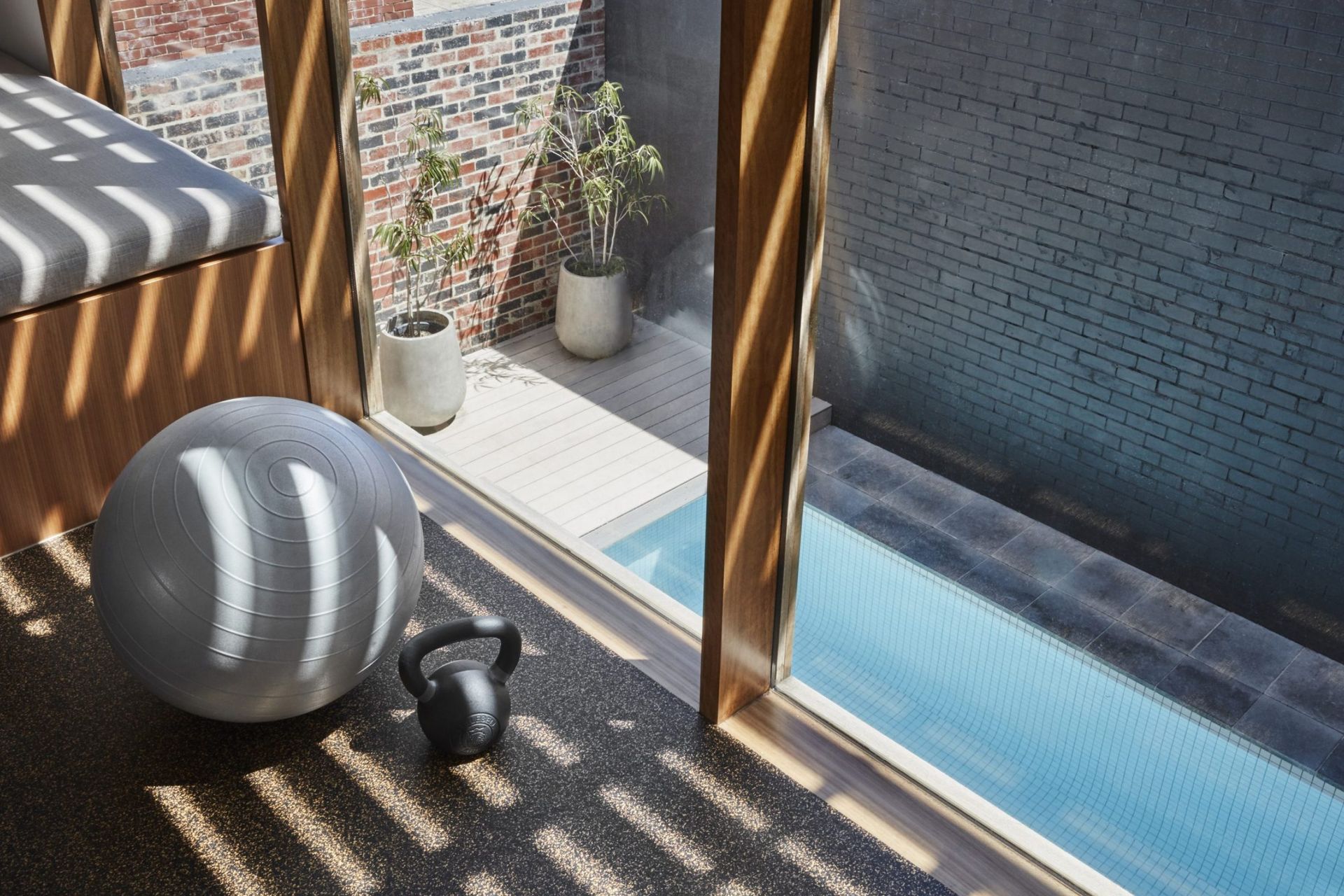The rise of health and wellness in the home space
Written by
08 November 2022
•
4 min read

The pandemic has undeniably changed the way we think about the home space. Extensive lockdowns and stay-at-home orders forced us to sleep, eat, work, play, study, socialise, exercise and worship at home. The experience has left many people reluctant to once again share space with large crowds of people unnecessarily. Mitsubishi Electric’s Healthy Home Trends Research Report found we’re now more ‘germ aware’ than ever before, with 54% of Australians admitting they’re now more cautious of bacteria in the home, and 23% saying they’re much more cautious of germs present in their environment.
Naturally, homeowners are now looking for ways to pursue health, wellness and spiritual goals within the safe and private confines of their homes, a desire that is reflected by consumer behaviour. The Global Wellness Institute says residential real estate is the next frontier to be radically transformed by the wellness movement, and we can expect homes to soon be proactively designed to support our goals of holistic health. In fact, the report named Australia as the third largest market for wellness real estate.

Wellness
In January 2022, media outlets reported increased buyer interest in purchasing homes that had ‘wellness rooms’, a space typically found in corporate environments to provide employees with a dedicated space to relax throughout the day. Similarly, Forbes then reported ‘calming personalised spaces’ as a top design trend of 2022. Another study conducted by McKinsey & Company supported the claims, finding the global wellness market to be valued at more than $1.5 trillion with a predicted annual growth of 5% to 10%.
A wellness room can present as a meditation or prayer space, yoga or pilates area, or be designed to house wellness products such as infrared saunas, spa baths, plunge pools or steam rooms. In 2020, the ABC reported a boom in sauna sales in response to the pandemic, citing the claims of two major sauna sellers in Australia whose sales had tripled.
Read now: How the pandemic has redefined the role of the home space

Health
The idea of health and fitness is emerging as an aspirational lifestyle trend with luxury fashion houses entering the market. Dior’s collaboration with Technogym is an excellent example of this, as is Sydney’s HermèsFit. Research by ReportLinker predicts revenue generated by the home gym equipment market will grow up to 10% by 2025, while a survey conducted by the American Institute of Architects found that 23% of clients were now requesting an exercise room or yoga space, and 43% of clients were requesting flexible multi-purpose spaces.
Nerio Alessandri, president and founder of Technogym, says that home and digital fitness were emerging trends even before the pandemic. “Of course, after these past years, health and wellness has become a key priority for people on a global level,” says Nerio. “People are ready to spend more time and invest more money on their health and quality of life, therefore fitness equipment is now a part of the home environment.”

What can we expect homes of the future to look like?
At the 2022 Design Show Australia, the country’s leading architects, interior designers, product suppliers and industry bodies gathered to talk about the trends and issues affecting the industry. Unsurprisingly, wellness emerged as a key sector of growth. “We’ve seen the end of houses as dwellings, and instead we are seeing them as resorts; properties with infrared saunas, gyms and bespoke massage rooms,” says Jo Lawless, director and interior designer at Lawless & Meyerson.
The rise of health and wellbeing in the home space will manifest as micro resort-style homes, particularly in rural postcodes where space is unrestricted, and home saunas and massage rooms that provide private spa experiences. We can expect to see home gyms that incorporate specialised equipment such as climbing walls or reformer machines, essentially rooms that provide homeowners with unlimited access to private and bespoke facilities that enhance their quality of life.
Read more articles about Australian homes on ArchiPro.